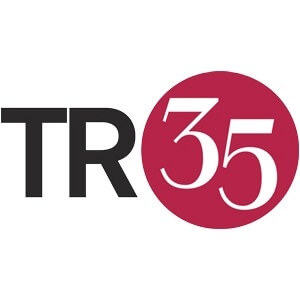News
CAMBRIDGE, Mass. – August 19, 2008 – The Harvard School of Engineering and Applied Sciences (SEAS) today announced that Donhee Ham, the John L. Loeb Associate Professor of the Natural Sciences, and Robert Wood, Assistant Professor of Electrical Engineering, have been recognized by Technology Review magazine as among the world’s top innovators under the age of 35.
A panel of expert judges and the editorial staff of Technology Review selected the two SEAS faculty members from more than 300 nominees.
Ham was recognized for his role in building one of the smallest complete nuclear magnetic resonance (NMR) systems to date. Wood also received praise for thinking and designing on a small scale, perfecting a life-sized microrobotic fly.
“Both of these guys are fearless. What they aim for is nothing less than turning science fiction into reality,”said Greg Morrisett, Allen B. Cutting Professor of Computer Science and Associate Dean for Computer Science and Engineering at SEAS. “They are willing to pick up and master whole new fields, from materials to biology, to reach their goals.”
In fact, electrical engineer Ham and his graduate student Nan Sun worked in close collaboration with Ralph Weissleder at Massachusetts General Hospital, Harvard Medical School.Their resulting NMR system, weighing a mere 2kg and occupying 2.5 liters, scans biological samples by using magnetic nanoparticles. To do so, the diminutive device relies on a sophisticated CMOS RF receiver chip (like those in Bluetooth devices) and a magnet of only 0.5 Tesla. The system delivers 60 times more mass sensitivity than a 120-kilogram commercial machine. In addition to the obvious benefits of being portable (ideal for use on battlefields and other remote locations or en route to medical facilities), the extra boost in sensitivity could enable physicians to find pathogens much earlier, at the first sign of a disease.
To bring his ersatz fly to life, Wood relied upon novel prototyping methods and laser-micromachined composite materials to craft stiff and lightweight links, articulated joints, and rigid exoskeletons and airframes. Thanks to nearly a decade of dedicated research, he was able to overcome a host of other challenging issues such as determining optimal wing design; generating a system for sufficient thrust and power; and developing miniaturized power electronics to enable hovering. Wood’s fly is believed to be the first such biomorphic bug of its size and shape to actually take off. He envisions that some day a fleet of such flies could rapidly fan out to scout an area (for civilian or military surveillance) or be used for detection (such as to check for potential forest fires or to enhance search-and-rescue missions in hard-to-reach or dangerous places).
“The TR35 honors young innovators for accomplishments that are poised to have a dramatic impact on the world as we know it,” said Jason Pontin, editor in chief and publisher of Technology Review magazine. “We celebrate their success and look forward to their continued advancement of technology in their respective fields.”
Ham, Wood and the other TR35 winners for 2008 will be featured in the September issue of Technology Review magazine and honored at EmTech 08 Conference to be held at MIT in Cambridge, Mass. September 23-25, 2008.
Additional information about past and present TR35 winners and judges is available here. For more information about the Em Tech Conference please visit this site.
###
Additional information
Robert Wood's microrobotic fly (including a link to a video)
http://harvardmagazine.com/2008/01/tinker-tailor-robot-fly.html
"Fly, Robot, Fly" by Robert Wood (in IEEE Spectum, March 2008)
http://www.spectrum.ieee.org/mar08/6017
Donhee Ham's research group page
http://people.seas.harvard.edu/~donhee/
Cutting-edge science delivered direct to your inbox.
Join the Harvard SEAS mailing list.
